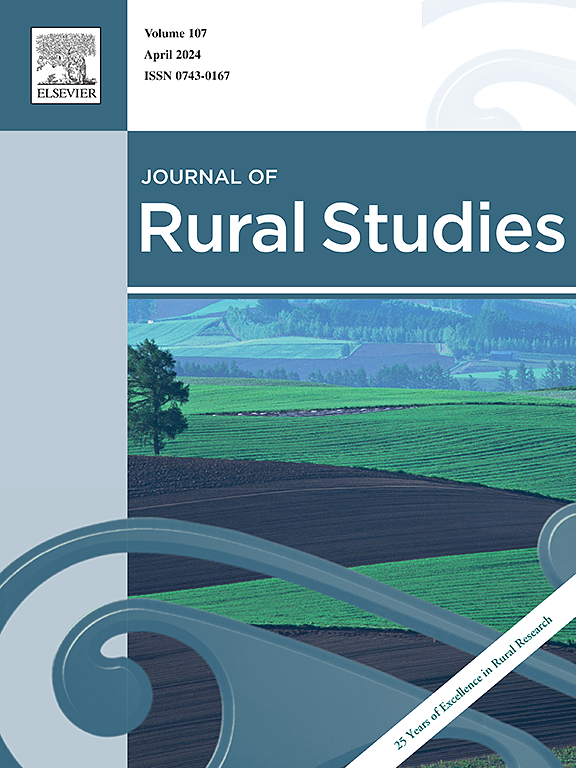Regional drivers or local constraints? Spatial patterns and development pathways of specialized villages in Henan, China
IF 5.7
1区 社会学
Q1 GEOGRAPHY
引用次数: 0
Abstract
Specialized Villages (SVs) have emerged as a pivotal strategy for rural revitalization in China. Yet, the regional conditions underpinning their formation and sustainability remain underexplored. This study examines the spatial heterogeneity and drivers of SV evolution in Henan Province, employing stepwise regression analysis, GeoDetector, and Shapley value decomposition to analyze the contributions and interactions of climate, accessibility, economic development, and governance factors on SV formation, disappearance, persistence, and new formation rates. Results reveal that higher rainfall and temperature stability promote SV persistence and formation by reducing production risks, while peripheral regions with improved road accessibility exhibit higher SV new formation rates and lower disappearance rates. Conversely, economically developed regions experience higher SV disappearance rates, highlighting the paradoxical interplay between prosperity and specialization sustainability. Strong grassroots leadership and regional branding capacity further enhance SV persistence. These findings underscore the importance of place-based strategies in SV planning, suggesting that aligning interventions with local climatic, infrastructural, and institutional conditions can foster sustainable rural specialization. The methodological framework provides a replicable approach for analyzing SV dynamics in diverse regional contexts, offering valuable insights for rural policy and planning under the broader goal of sustainable rural revitalization.
区域性驱动因素还是地方性制约因素?河南特色村空间格局与发展路径
特色村已成为中国乡村振兴的关键战略。然而,支撑其形成和可持续性的区域条件仍未得到充分探索。本文采用逐步回归分析、GeoDetector和Shapley值分解等方法,分析了气候、可达性、经济发展和治理等因素对河南省SV形成、消失、持续和新形成速率的影响及其相互作用。结果表明,较高的降雨量和温度稳定性通过降低生产风险来促进SV的持续和形成,而道路可达性较好的外围地区SV的新形成率较高,消失率较低。相反,经济发达地区的SV消失率更高,凸显了繁荣与专业化可持续性之间矛盾的相互作用。强大的基层领导和区域品牌能力进一步增强了SV的持久性。这些发现强调了基于地方的战略在SV规划中的重要性,表明将干预措施与当地气候、基础设施和制度条件相结合可以促进可持续的农村专业化。该方法框架为分析不同区域背景下SV动态提供了一种可复制的方法,为可持续乡村振兴的更广泛目标下的乡村政策和规划提供了有价值的见解。
本文章由计算机程序翻译,如有差异,请以英文原文为准。
求助全文
约1分钟内获得全文
求助全文
来源期刊

Journal of Rural Studies
Multiple-
CiteScore
9.80
自引率
9.80%
发文量
286
期刊介绍:
The Journal of Rural Studies publishes research articles relating to such rural issues as society, demography, housing, employment, transport, services, land-use, recreation, agriculture and conservation. The focus is on those areas encompassing extensive land-use, with small-scale and diffuse settlement patterns and communities linked into the surrounding landscape and milieux. Particular emphasis will be given to aspects of planning policy and management. The journal is international and interdisciplinary in scope and content.
 求助内容:
求助内容: 应助结果提醒方式:
应助结果提醒方式:


